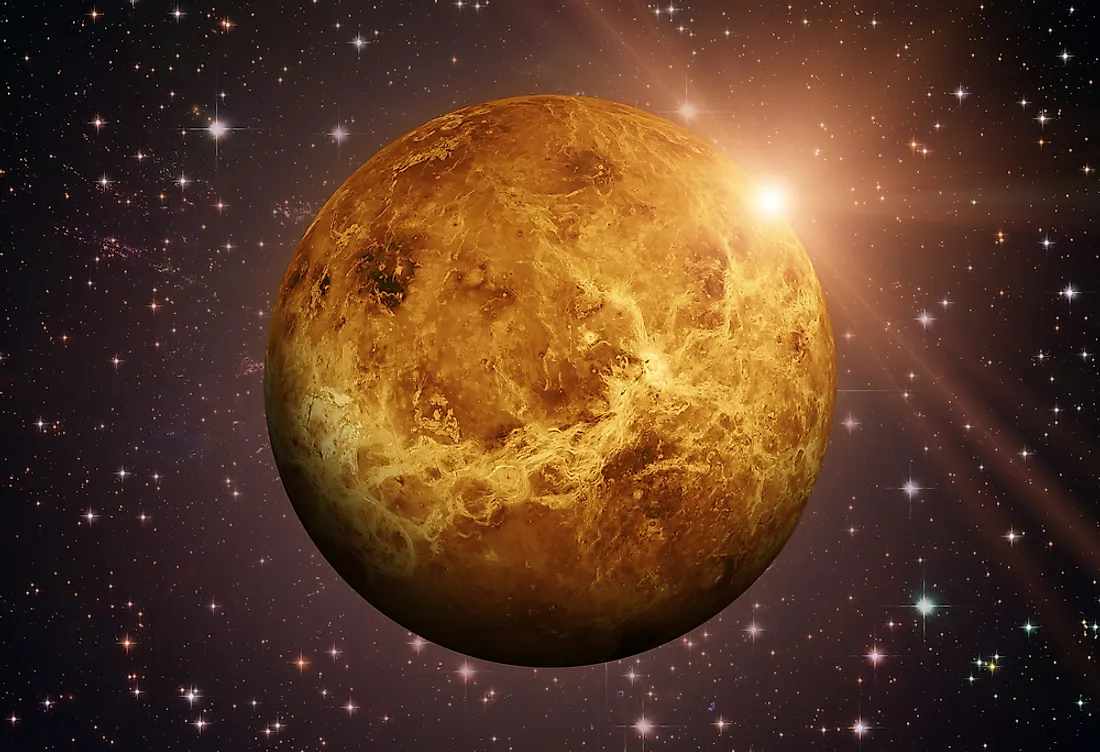What are the Terrestrial Planets?

The planets in the Solar System are categorized into two primary groups based on their respective planetary surfaces: gas giant planets and terrestrial planets. Terrestrial planets are defined as planets which have solid surfaces and are mainly made up of silicate compounds. The Solar System has only four terrestrial planets: Mars, Earth, Venus, and Mercury.
The Terrestrial Planets Of The Solar System
Mercury
Mercury is the smallest of the four terrestrial planets of the Solar System having an equatorial radius of 1,516 miles. The planet even dwarfs satellites such as Titan in size. However, Mercury has the second highest density of any planet in the Solar System with its density of 5.427 grams per cubic centimeter being only surpassed by that of Earth. Mercury’s high density offers a glimpse of the planet’s internal structure which is believed to be rich in iron. The planet’s core, in particular, is believed to have the highest iron content of any planet in the Solar System. Astronomers believe that Mercury’s molten core accounts for 55% of its total volume. Covering the iron-rich core is the mantle which is mainly composed of silicates. The planet’s rocky crust is 21.75 miles thick. Mercury lies 0.39 AU (astronomical units) away from the Sun making it the closest planet to the Sun. Due to its proximity to the Sun, surface temperatures on Mercury soar to reach highs of 700 K.
Venus
Venus is the closest neighbor to Earth and is also one of the four terrestrial planets of the Solar System. The planet is the second largest of the terrestrial planets with an equatorial radius of 7,514 miles; surpassed only by the Earth. However, the thick atmosphere of Venus is the densest in the Solar System with its atmospheric pressure being 92 times that of Earth. The thick atmosphere is made up of carbon dioxide which has a greenhouse effect on the planet and leads to surface temperatures to soar to about 735 K, the highest of any planet in the Solar System. The surface of the planet is dominated by volcanic plains which cover about 80% of the surface. The surface also features numerous impact craters with some being 174 miles in diameter.
Earth
Of the four terrestrial planets, the Earth is the largest having an equatorial radius 3,958.8 miles. The planet is also the only terrestrial planet known to have a hydrosphere. Earth is the third closest planet to the Sun with its distance from the Sun of 92,955,902 miles making up 1 AU (astronomical unit). The planet also has the highest density of any planet in the Solar System with its density being established to be 5.514 grams per cubic centimeter. Silica and Alumina are the two compounds found in highest concentrations on the Earth’s crust with the two making up 75.4% of the continental crust and 65.1% of the oceanic crust.
Mars
Mars is another terrestrial planet in the Solar System and is the furthest from the Sun at a distance of 1.5 AU. The planet has an equatorial radius of 2,110.3 miles making it the second smallest terrestrial planet. Mars surface is primarily made up of basalt rocks. The planet’s crust is quite thick and ranges between 78 miles and 25 miles in depth.
Dwarf Planets
There are other smaller planets known as dwarf planets which have few characteristics which define terrestrial planets such as the presence of a solid surface. However, the surfaces of these dwarf planets are made of icy materials and therefore cannot be classified as terrestrial planets. These dwarf planets include Pluto and Ceres.











